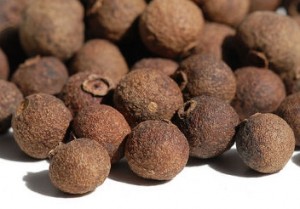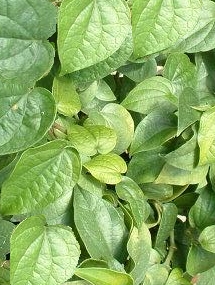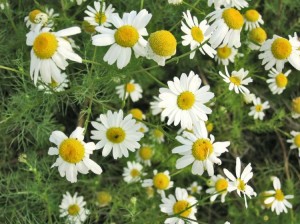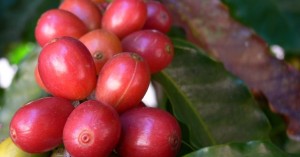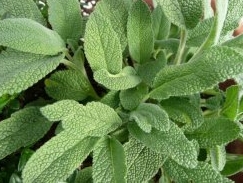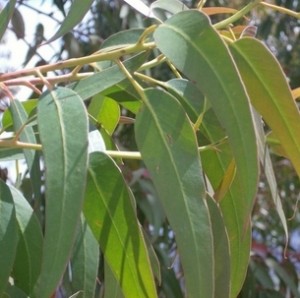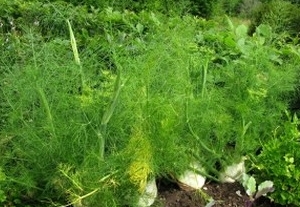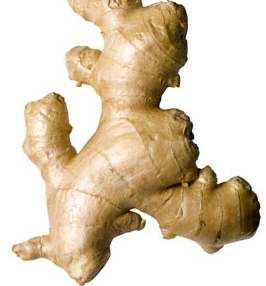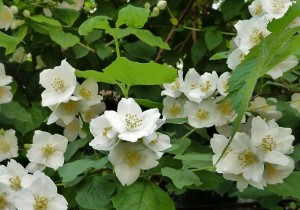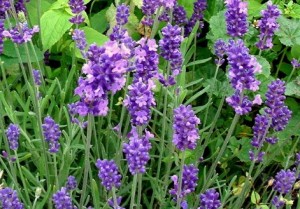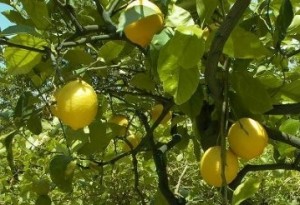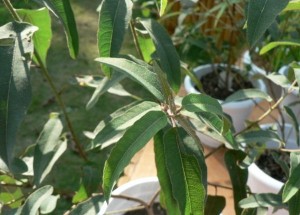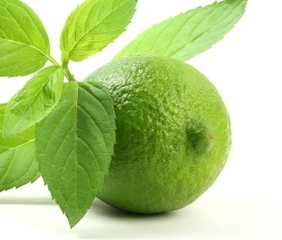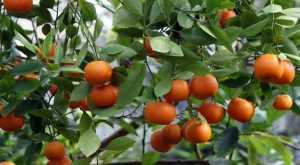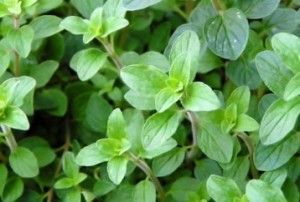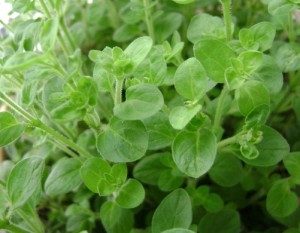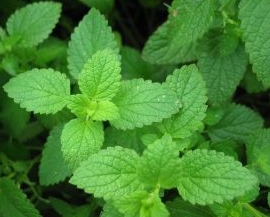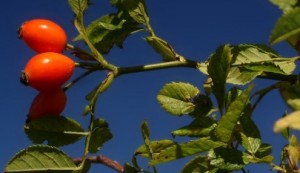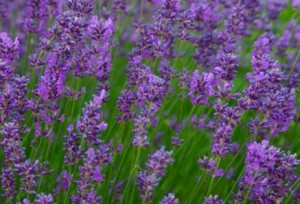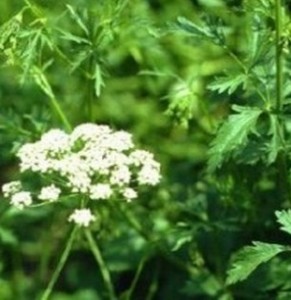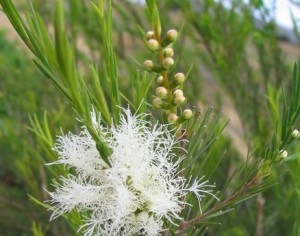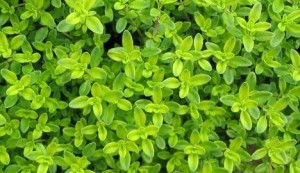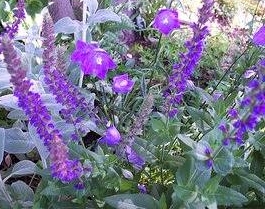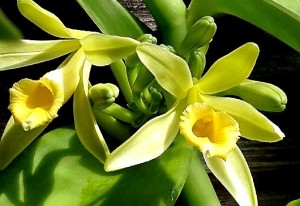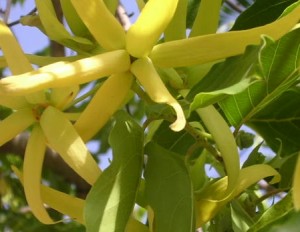Allspice Essential Oil
Allspice is also known as Pimento Berry. The botanical name of allspice is pimento officinal is. This plant can be found in the islands of Caribbean and South America. The oil is extracted through steam distillation from its leaves and fruits. It is thin in consistency and has a strong strength of initial aroma.
USE: Treatment of muscle tone, arthritis, remove muscle stiffness, muscular and gastric cramps, relieves rheumatism, indigestion, and nausea. It is also use for depression, nervous tension/ exhaustion and neuralgia.
CHEMICAL COMPONENTS: methyl eugenol, eugenol, cineol, caryophyllene and phellandrene.
SAFETY: Can cause mucous membrane and skin irritation. People who have liver disease and hemophilia must refrain from using allspice oil.
Peru Balsam Oil
Peru Balsam oil is also known as Myroxylon Pereira in Botany. All parts of the tree contain a resin juice. This juice is the balsam collected and extracted to produce oil. Steam Distillation is also the method use for extraction. It has a dark brown color and its consistency is very thick. The initial strength of aroma is medium. The aroma of the Peru balsam can be described as sweet, fresh and earthy.
USE: Treatment of respiratory disease such as bronchitis, flu, common colds, and cough. It is also beneficial to use it for skin problems such as eczema, chapped skin, rashes and sensitive skin.
CHEMICAL COMPONENTS: It contains the following chemical components: benzoic acid, benzyl cinnamate, cinnamic acid, cinnamyl cinnamate.
SAFETY: The oil may cause possible senzitation.
Black Pepper
In botany, the black pepper is known as Piper Nigrum. It is extracted through the method of steam distillation. It is mainly used as a condiment. The black pepper is considered as the fruit of the pepper tree that has been dried. The oil is clear in color and has a thin consistency. The initial strength of aroma is medium. Its scent can be considered as crisp and fresh.
USE: treat muscle aches, chilblains and arthritis. It has digestive properties that can cure constipation and sluggish digestion.
CHEMICAL COMPONENTS: Its chemical components include limonene, myrcene, pinene, beta-caryophyllene , phellandrene, beta-bistable, sabine, linalol, pinocarveol, terpineol alpha, camphene, terpenene .
SAFETY: if this has been used in large amounts it may cause irritation, inflammation of the intestines, and vomiting.
Roman Chamomile
Roman Chamomile oil can be either grey or pale blue in color. Its botanical name is anthemis nobilis. The oil has a very thin consistency and it has a medium to strong initial aroma. The scent of the oil can be described as bright, crisp, sweet, fruity and herbaceous. The roman chamomile is extracted through steam distillation and the yield of the oil is 1.7% from the fresh flowers. It is originated from France, Germany, Spain, Morocco and Italy.
USE: It is very effective for irritation, mood swings and temper control. Relating to this, it can be used for dysmenorrhea, PMS and menopausal mood swings. The oil can also use for treatment of skin treatment such as allergies , abscesses, boils, arthritis, colic, cuts, earache , dermatitis, flatulence, inflamed skin , hair and insect bites. It has a calming effect for insomnia, headache, nausea, and neuralgia.
SAFETY: The chamomile oil may cause dermatitis in some individuals. There are some suggestions that chamomile must be avoided by pregnant women because it might cause allergic reactions and it stimulates urine. Consultation is needed when using chamomile during pregnancy.
Cinnamon
Botanical name for Cinnamon is Cinnamomum zeylanicum. Color of the oil can either be a golden yellow or brown and its consistency has a slightly oil feel. Steam Distillation is used for the extraction of the oil. Initial strength of aroma of the cinnamon is strong. The aroma of the cinnamon oil can be described as earthy and peppery but has a slight woodsy scent. The bark of the cinnamon tree is more concentrated than the one distilled from leaves. However it is more expensive.
USE: Cinnamon is used for constipation, flatulence, exhaustion, lice, low blood pressure, scabies, rheumatism and stress.
CHEMICAL COMPONENTS: The oil contains eugenol acetate, eugenol, cinnamic aldehyde, and benzyl benzoate.
SAFETY: As a precaution, it can cause mucus membrane irritation and sensitizes the skin. It is recommended that people who have prostate cancer, hemophilia, and kidney and liver disease should only use the oil from the leaf because it is less concentrated.
Citronella
The Citronella oil is clear with a thin consistency. Its botanical name is Cymbopogon Nardus. Steam distillation is the method used for the extraction of the oil. Its aroma has a medium initial strength and can be described as citrusy, slightly fruity, and fresh. The citronella is a grass commonly found in Asian countries, Africa and some parts of the Latin America and South America.
USE: For a person with excessive perspiration, citronella is recommended for use. It can also use to treat oily skin, headache and soothe fatigued muscles. It is commonly used in candles and topical ointments to repel insects. It is a belief that the insects do not like the scent of citronella and as a result they avoid being near it.
CHEMICAL COMPONENTS: Main ingredients of the oil are citronellal and geraniol.
SAFETY: A possible side effect from the use of this oil is skin sensitization. It is not advisable for use to pregnant women and small children.
Coffee
Coffee is also known as Coffee Arabica in botany. It is dark brown in color and has a consistency of medium to thick. Common method of extraction for the oil is solvent or carbon dioxide extraction.The oil is extracted from roasted Arabic beans. These beans originate from native to the tropical regions of South America, Asia and Africa. The beans are roasted in order to get the maximum aroma. Initial strength of the aroma of coffee is strong and it can be described as strong and rich. The coffee oil is compatible with olive oil.
USE: Coffee oil is rich in enzymes that promote moisture retention, quick absorption and good compatibility for cosmetics. It is high in essential fatty acids. The oil is recommended for the aging skin, dry skin conditions, severe conditions like eczema and psoriasis. It can also be used to moisturize dry, brittle and damaged hair. Since it has high moisture retention it is often use in lip care products.
Common Sage
Common Sage oil or the Dalmation Sage oil is clear with a thin consistency. It is also known as Salvia Officinalis The sage commonly grows in the northern Mediterranean shores. Common method of extraction use is steam distillation. The aroma of the sage has a strong initial scent. It can be described as camphorous, fruity and herbaceous.
USE: Common Sage is mainly used for fragrances. It must have low dilutions. It is also used for spiritual work but with some precautions. In the United States, sage is used to cure the affections of the mouth and as a gargle for sore throat. It is very useful for bleeding gums and maintains flow of saliva.
CHEMICAL COMPONENTS: Common components of the sage are b-thujone, a-thujone, camphor and cineol. As a note for safety, because of its high thujone content, sage oil must be avoided by pregnant women and people who have epileptic conditions.
SAFETY: The use of the oil for aromatherapy is not highly recommended because it might cause skin irritation.
Eucalyptus
Eucalyptus is clear oil with a strong initial strength of aroma. Its consistency is thin and its scent can be described as fresh, medicinal woody and earthy. Its botanical name is eucalyptus globules. Its common method of extraction is steam distillation.
USE: Eucalyptus is commonly used for respiratory problems like bronchitis, colds coughing cold sores and flu. It is also use to clear sinusitis and treat arthritis among its benefit also include relief of muscle aches and pains.
CHEMICAL COMPONENTS: cineole, globulol, pinene, limonene, camphene, pinocarvone.
SAFETY: The oil has a high level of toxicity and should not be ingested. According to tisserand, no special precautions are necessary when using eucalyptus oil except for ingestion.
Fennel
The fennel is also known as foeniculum vulgare in botany. Its common method of extraction is steam distillation. When extracted, it has a clear but faint yellow colour with a thin consistency. Its initial strength of aroma can range from medium to strong. The aroma of the substance can be described as a sweet and spicy with a licorice like scent aroma.
USE: The oil is commonly used for bruises, cellulites, flatulence, halitosis, nausea, and water retention. It can also be used for mouth cures and gum problems. It is believed that it can help in the removal of toxin build up and obesity.
CHEMICAL COMPONENTS: chemical composition of the oil includes the following: anethole, cineole, myrcene, eugenol, thymol, methyl chavicol limonene, phellandrene, alpha terpene, pinene, fenchone, geraniol.
SAFETY: Use of fennel oil may cause skin irritation and it could possibly be a carcinogenic agent. People with problems like endometriosis, prostatic hyperplasia and oestrogen-dependent cancers should avoid using this oil. It can be also harmful for epileptic people and pregnant women.
Ginger
Ginger has a botanical name of Zingiber officinale. Ginger is commonly used as an ingredient in food recipes. Steam distillation is the common method of extraction for Ginger. The colour of the oil is light yellow and it has a thin consistency. The scent of ginger can be described as warm, spicy, earthy and woody. Initial strength of aroma ranges from medium to strong.
USE: The ginger oil can be used for aching muscles, the treatment of nausea and poor circulation. It also functions as an agent to alleviate arthritis.
CHEMICAL COMPONENTS: The ginger oil is comprised of camphene, a-pinene, , b-pinene, linalool , 1,8-cineole, borneol, nerol , y-terpineol, , neral, geraniol, , geranyl acetate, geranial , b-bisabolene, and zingiberene.
SAFETY: Ginger oil is slightly phototoxic. The oil must not be used for areas that would be exposed to sunlight for 24 hours because of its photo toxicity. There are no other special precautions given.
Jasmine
Jasminum Grandiflorum is the botanical name of Jasmine. The common method of extraction used for Jasmine is solvent extraction. It can be described as having a deep brown color with a golden tinge. The consistency of the oil is medium and the initial strength of aroma is strong. Its scent is warm, floral and very exotic. The oil is considered as absolute oil.
USE: The jasmine oil is used to treat depression and exhaustion. It can relieve dry skin and labor pains.
CHEMICAL COMPONENTS: oil is constituted of the following chemicals: benzyl zcetate, benzyl alcohol, benzyl benzoate , linalool indole, cis-jasmone, geraniol, p.cresol ,methyl anthranilate, farnesol, cis-3-hexenyl benzoate, eugenol, ceosol , nerol, , benzoic acide, benzaldehyde, y-terpineol, isophytol , nerolidol phytol.
SAFETY: There are some indications that the Jasmine oil can cause an allergic reaction to the human skin.
Lavender
The lavender is one of the most common oils used in aromatherapy. It is also known as Lavendula officinalis. Steam distillation is the common method of extraction used for the lavender. The lavender has a clear color with a little bit of yellow splash on it. The initial strength of aroma is medium and it has a thin consistency. The scent of the lavender can be considered as fresh, sweet, floral, herbaceous and fruity.
USE: The lavender is used for skin problems such as acne, athlete’s foot, chicken pox, colic, cuts, cystitis, itching, insect bites, scabies, scars, stretch marks, dermatitis and vertigo. The lavender has a calming effect for depressed people, relieve anxiety and stress. It can help in respiratory problems such as asthma, and cough. It has properties that can be used for insect repellant and cure insect bites as well.
CHEMICAL COMPONENTS: linalyl acetate, terpinenol, linalol cineole, beta-farnascene and caryophyllene .
SAFETY: The lavender oil can be used to make massage oil for relaxation and soothe skin irritation.
Lemon
The lemon is also known as citrus limon. The lemon is mostly used for food recipes. The oil can be extracted through cold pressing. The oil is described as having thin consistency with a yellow color. It is evident that the oil has a very strong strength of initial aroma. The aroma of the oil is similar to the fresh lemon rinds but it is richer and stronger.
USE: The lemon oil can be used to treat athlete’s foot. Lemon oil is used to treat colds and flu. It has beneficial effects on skin. Warts, varicose veins, spots and oily skin are some of the skin problems that the lemon oil is used on.
CHEMICAL COMPONENTS: The lemon oil is composed of limonene, geranial, citral citronellyl acetate, and pinene.
SAFETY: The lemon oil may cause skin irritation. It is phototoxic and an area of application’s exposure to sunlight must be limited to 24 hours.
Lemon Eucalyptus
The lemon eucalyptus oil is a pale yellow substance with a thin consistency. Its botanical name is eucalyptus citriodora. The lemon eucalyptus oil comes from a different variety of eucalyptus tree and is grown in many parts of the world. Steam distillation is the common method of extraction used. The oil can be obtained from the leaves and the stacks of the tree. The initial strength aroma of lemon eucalyptus is medium and it has a sweet and lemony scent with a hint of wood.
USE: The lemon eucalyptus oil is used for respiratory problems like bronchitis, colds, cough, flu and sinusitis. It can also relieve arthritis and increase blood circulation. Some studies show that it is effective as an insect repellant. It is also indicated that the aroma of lemon eucalyptus can soothe uneasiness of the nerves and awaken the mind.
SAFETY: Indications of special precautions needed when using lemon eucalyptus oil.
Lime
Lime is also known as citrus aurantifolia. The method of extracting lime oil is through cold pressing. It has a light green color with a hint of yellow and its consistency is thin. First whiff of oil has an initial strength of medium and its aroma can be described as fresh, citrusy and sweet.
USE: The lime oil is popular because of its ability to purify and renew the spirit and the mind. It is said that it can be used for cleansing aura. Lime is a popular treatment for acne, dull skin and varicose veins. Like the lemon, it can also be used for treatment of respiratory illness like asthma and flu.
CHEMICAL COMPONENTS: The lime oil is composed of these chemicals, a-pinene, b-pinene, myrcene, sabinene limonene, y-terpinene, terpinolene, octanal, nonanal, pentadecanal , tetradecanal, trans-a-bergaptene, caryophyllene, b-bisabolene, geranial, neryl acetate, geranyl acetate, a-terpineo, linalool.
SAFETY: The same as the lemon, it is also phototoxic so the area of application must not be exposed to sunlight for 24 hours.
Mandarin
The Mandarin oil can be described as a greenish orange substance with a thin consistency. Its botanical name is citrus reticulata. It has an initial strength aroma of medium and it can also be described as very sweet, citrusy and fruity.
USE: Mandarin oil is used for skin care. The oil can be used for the treatment of acne, dull skin, oily skin, removal of scars, removal of spots and prevent wrinkles. It can also help in insomnia and take away stress.
CHEMICAL COMPONENTS: Its main chemical components are limonene, geraniol, methyl methylan thranilate, citral, and citronellal. There are no clear indications that special precautions are needed when using mandarin oil.
SAFETY: some indications in studies that the mandarin oil is phototoxic oil. To be on the safe side, the mandarin oil must be treated as phototoxic. As such, area of application must be refrained from being exposed to sunlight for 24 hours.
Marjoram
Marjoram oil can be described as having an aroma of herbaceous, sweet, woody and campherous medicinal. The color of the marjoram oil is clear with a hint of yellow and its consistency is thin. The initial strength of aroma of marjoram is medium. Common method of oil extraction used for marjoram is steam distillation.
USE: The marjoram oil can be used to soothe aching muscles, muscle cramps, strains and sprains. It has abilities to alleviate problems in the respiratory system like bronchitis, and coughing. It can also relieve stress and ease hypertension. Studies show that the use of marjoram oil can also be an aphrodisiac.
CHEMICAL COMPONENTS: Chemical components of the oil include the following. terpinen-4-ol , alpha-terpineol, linalol, sabinene sabinol, thujanol, linalyl acetate, citral, camphor, carvacrol, estragol, eugenol, , phellandrene, myrcene pinene, alpha terpenene, beta-caryophyllene.
SAFETY: Pregnant women must avoid the use of Marjoram oil.
Nutmeg
The Nutmeg oil is also known as Myristica fragrans in botany. The oil is extracted using the method of steam distillation. The consistency of the oil is thin and the color is clear. The initial aroma strength of the oil ranges from medium to strong. The scent of nutmeg is described as rich, spicy sweet and woody. It is similar to that of the nutmeg use for food however the scent is richer and stronger.
USE: Nutmeg is used to treat constipation, arthritis, neuralgia and rheumatism. It can be an aid for slow digestion. Studies also show that it can relieve fatigued muscles, muscle ache and poor circulation of blood
CHEMICAL COMPONENTS: The chemical composition of the nutmeg is Sabinene, Terpinen-4-ol, Pinene, Camphene, Cineole, Limonene, Myristicin, and Alpha Terpenene. There are some precautions in using the nutmeg oil.
SAFETY: The oil can be considered a possible oral toxin and possible carcinogen. There are also indications that it might affect the behavior of a person. If large amounts are used, it can cause nausea and tachycardia.
Orange, Bitter
Citrus Aurantium is the botanical name of bitter orange. The common method of extraction used to obtain the oil is by cold pressing. The oil can be described as a yellowish orange substance with a thin consistency. Its aroma has a medium initial strength. The scent of the bitter orange is a combination of the sweetness of the orange oil and the bitterness of the grapefruit oil. It can be described as bittersweet.
USE: The bitter orange oil has abilities to cure respiratory problems such as cold and flu. It can be used to treat the gums and mouth disease. The oil can also act as an aid for slow digestion and constipation.
CHEMICAL COMPONENTS: Using orange bitter oil may help restore dry skin. Chemical components of the oil are the following: Myrcene, Limonene camphene, Ocimene, Pinene and Cymene.
SAFETY: Exposure to sunlight for 24 hours is not recommended for the area of application because bitter orange oil is phototoxic.
Oregano
Oregano is also named in botany as oreganum vulgare. It is not the same as the oregano spice used in cooking. The common method of extraction used to obtain oregano oil is through steam distillation. The oil can be described as a pale yellow substance with thin consistency. The oregano oil has a strong strength of initial aroma. The scent can be described as herbaceous and sharp.
USE: The oregano is used for coughs and aid digestion.
CHEMICAL COMPONENTS: It is chemical components are Thymol, Carvacrol, Cymene, Pinene, Caryophyllene, Linalool, Bisabolene, Borneol, Geranyl acetate, Linalyl acetate, Terpinene.
SAFETY: The oregano oil causes irritation to the skin and mucus membrane. The use of the oil may reduce the absorption of iron in the body. Experts recommend that consumption of iron supplements must be taken together with oregano oil. Pregnant women must avoid the use of this oil as it can stimulate the blood flow in the uterus and can weaken the lining that surrounds the fetus.
Peppermint
The peppermint is also known as menthe piperita in botany. Steam distillation is the common method of extraction use for the peppermint. The color of the oil is clear with a hint of yellow. IT has a thin consistency and has a strong strength of initial scent. Aromaa of the peppermint can be described as minty, and almost the same as that of peppermint candies however, the smell is much stronger. It can also be compared to the fragrance of spearmint.
USE: Peppermint oil is used for asthma, sinusitis and fever. It helps in relieving exhaustion, headache, sinusitis, vertigo and nausea.
CHEMICAL COMPONENTS: Chemical composition of the peppermint can be broken down into the following: Menthone, Menthyl Acetate Cineole, Phellandrene, Limonene Pinene, and Beta-Caryophyllene.
SAFETY: As a safety reminder, the peppermint oil must not be used in cardiac fibrillation, epilepsy and fever. It is considered to be neurotoxin and an irritant to the mucus membrane. Again, there is some information that the oil can be swallowed orally. However, it is important a qualified aromatherapy practitioner must be consulted first before doing any aromatherapy.
Rose
Rose is also known in botany as rosa damascene. The common method of extraction use to obtain rose oil is solvent extraction. Steam distillation can also be used for extraction and this is called Rose Otto. The color of the oil varies depending on the method of extraction. The Rose absolute which is solvent extracted, can be described as deep red and the Rose Otto can be described as light yellow. The consistency of each is also different. Rose absolute is thick and Rose Otto is thin. The initial strength aroma of both oils is strong. The aroma of the oil can be described as floral and sweet.
USE: The rose oil is use to treat depression, and frigidity. It can help during menopause and relieve stress. Skin problems such as eczema and treatment of mature skin are also relieved through the use of the rose oil. The rose oil is very helpful in times of grief and helpful for sleeplessness.
CHEMICAL COMPONENTS: Chemical constituents of the Rose Otto include, Geraniol, Nerol, Citronellol, Farnesol, Esters, Rose Oxide, Limonene, Pinene and Myrcene.
SAFETY: There are no special precautions stated when using rose oil.
Rosemary
Rosemary is also named as Rosmarinus Officinalis in botany. The method of extraction use for rosemary is steam distillation. The color of the oil is clear and it has a thin consistency. The initial strength of aroma ranges from medium to strong. The scent of rosemary can be described as fresh, herbaceous, sweet and slightly medicinal.
USE: The rosemary oil has many uses. It can help aching muscles, arthritis, gout, muscle cramping and rheumatism. It aids in the treatment of dandruff and dull skin. It is also use for neuralgia and removes exhaustion
CHEMICAL COMPONENTS: Chemical components of the rosemary oil include Cineole, Borneol, Pinene, Linalol, Alpha-Terpineol, Terpinen-4-ol, Bornyl Acetate, Camphor, Camphene, Thujone, Limonene, and Beta-Caryophyllene
SAFETY: As safety information, rosemary is considered as neurotoxic. The oil may have cause side effects with pregnant women. People with epilepsy and hypertensive patients are also recommended to desist from using rosemary oil as it may affect them drastically.
Rosewood
Another common name for rosewood oil is Bois-de-rose Oil. The rosewood is considered as plants included in the endangered species. It is advisable that the purchase of rosewood oil must be with the suppliers who are conscientious in sourcing out their rosewood. Its botanical name is Aniba Rosaeodora. Extraction of rosewood oil is through the method of steam distillation. The oil can be described as clear with a yellow hint of color. The initial strength of aroma of the oil is medium and it can be described as sweet woody, fruity and floral.
USE: The rosewood oil has abilities to treat skin problems and respiratory problems. It is use as a remedy for acne, dry skin, dull skin, oily skin, scars and stretch marks. Colds, flu and fever are some examples of respiratory problems that can be healed by rosewood. The oil also has abilities to relieve headache and reduce stress.
CHEMICAL COMPONENTS: The oil is chemically composed of neral, a-pinene, camphene, geranial, geraniol, myrcene, limonene, linalool 1,8-cineole, linalool oxides, benzaldehyde and a-terpineol.
SAFETY: There are no particular safety precautions when using rosewood oil.
Sandalwood
Sandalwood is also known as santalum album as its botanical name. The common method of extraction used to obtain the oil is steam distillation. The oil has a clear color with a hint of yellow, its consistency ranges from medium to thick. The initial strength aroma for the sandalwood oil is medium and it can be described as rich, sweet, woody and floral.
USE: Sandalwood oil is used to relieve bronchitis, laryngitis and leucorrhea. It can also be a remedy to chapped skin, dry skin, removal of scars and stretch marks. When it is mixed with a base, sandalwood oil prevents itching and inflammation of the skin when applied directly to affected areas. Some studies show that there is a decrease in depression symptoms when sandalwood was used in massage Sandalwood is commonly used in cosmetic products such as soap, perfume and incense.
CHEMICAL COMPONENTS: Sandalwood oil is chemically constituted by Santalols, santyl acetate, and santalenes.
SAFETY: No special precautions indicated on the use of sandalwood oil.
Star Anise
In botany, the star anise is named as Illicium Verum. The common method of extraction to obtain it is through steam distillation. The oil can be described as a substance with thin consistency and has a color of pale yellow. The strength of initial aroma of star anise is strong. The aroma can be expressed as sharp, anise and licorice like scent.
USE: Star anise is use to remedy respiratory ailments like bronchitis, coughing, colds and flu. It also has abilities to cure indigestion
CHEMICAL COMPONENTS: It can also act as an aid to relieve rheumatism and colic. The star anise oil is chemically composed of (E)-anethole, foeniculin, limonene, methyl vhavicol, nerolidol, linalool, and cinnamyl acetate.
SAFETY: Large doses are not advisable for the use of star anise oil it can be a narcotic and slow down blood circulation. There is also a rish of sensitization during use. The oil must also be refrained to use in the case of alcoholism, paracetamol use, and breast feeding mothers, pregnant women, hyperplasia, damaged skin and liver disease.
Tea Tree
Melaleuca Alternifolia is the botanical name of the tea tree. The method of extraction used for the tea tree is steam distillation. The oil obtained from steam distillation is clear in color with a hint of yellow. Its consistency is thin and the initial aroma strength of the oil is medium. The scent can be further depicted as medicinal, fresh, woody, earthy and herbaceous.
USE: The tea tree oil has abilities to cure skin problems such as acne, athlete’s foot, corns, cuts, itching, oily skin, ringworm, spots and warts. It is use to alleviate respiratory illness like cold sores, flu, colds, and cough. It has properties to relieve insect bites, chicken pox and migraine.
CHEMICAL COMPONENTS: The tea tree is chemically composed of Terpinen-4-ol, Alpha- Cineole, Terpineol, Alpha Terpenene, Pinene and Beta-Caryophyllene.
SAFETY: As a precaution, the tea tree oil can cause skin irritation. There a study that has proven that the tea tree oil can alter hormone levels in the body. There have been cases of the use of tea tree oil product had caused breast enlargement in boys.
Thyme
The thyme is also known as thymus vulgar is in botany. Steam distillation is the common method of extraction to obtain the thyme oil. The color of the oil is reddish brown and its consistency is medium and slightly oily. The initial strength of aroma of the oil ranges from medium to strong. The aroma is described to have a fresh, medicinal and herbaceous scent.
USE: The thyme oil can be use for the treatment of arthritis, and muscle aches. It has abilities to cure skin problems like dermatitis, oily skin and scabies. Respiratory problems such as colds, flu, laryngitis and sore throat can also be cured by using thyme oil. It is also popular to ease insect bites and help in removing lice.
CHEMICAL COMPONENTS: chemically composed of a-pinene, a-thujene, camphene, p-cymene, B-pinene, a-terpinene, linalool, borneol, B-caryophyllene, carvacrol and thymol .
SAFETY: Thyme oil may cause skin and mucus membrane irritations. Hypertensive patients must avoid using thyme oil in aromatherapy.
Hyssop
Hyssop is also known as Hyssopus officinalis in botany. Method of extraction used to obtain the oil is steam distillation. It is derived from the leaves and flowering tops of the plant. The plant is native in areas of Asia and Mediterranean but is also spread out in Russia and Europe. The oil can be described as clear and thin in consistency. Initial strength of aroma of the oil is medium. The scent of hyssop can be described as fresh, earth, fruity, woody and slightly sweet.
USE: The oil is used to treat bruises. It also has abilities to heal coughing and sore throat.
CHEMICAL COMPONENTS: The hyssop oil is chemically composed of Pinocamphone, Borneol, Pinene, Thujone, Geraniol, Camphene, Limonene, and Phellandrene.
SAFETY: As a note of safety, hyssop oil is considered as moderately toxic andneurotoxic. Its use must be avoided for the patients with epilepsy, hypertension and fever. It is not recommended for use to pregnancy and small children
Vanilla
Vanilla is also known as vanilla planifolia in botany. It is native in Central America and Mexico. The vanilla is a climbing vine which grows up to 25 meters high. The vanilla oil is extracted through solvent or carbon dioxide extraction. The oil has a deep brown color and thick consistency. Extraction is done to the cured vanilla bean. The green capsules or fruit are picked and cured, while the immature pods is fermented and dried to create a fragrant vanilla bean. The strength of initial aroma of vanilla oil is strong. Its aroma can be described as rich, warm and sweet.
USE: Vanilla Absolute oil is commonly used in cosmetics. It is used to enhance the fragrance of aromatherapy and natural skin or hair care formulas
CHEMICAL COMPONENTS: Its chemical compositon includes vanillin, hydroxybenzaldehyde, isobutyric acid, acetic acid caproic acid, eugenol, and furfural
SAFETY: There are no specific precautions for vanilla oil use.
Ylang Ylang
Ylang Ylang is also known as cananga odorata in botany. Its common method of extraction is steam distillation. Ylang Ylang is common in Asia but the most preferred oil comes from Madagascar and Comoro Islands. There are three distillations of ylang ylang oil. It is categorized based on the scent. Extra is the most prized oil having the floral scent and Ylang Ylang III is the lowest and it has a slight bourbon scent. The ylang ylang oil has a clear with a yellow hint color. Its consistency is medium and the initial aroma strength of the oil ranges from medium to strong. The smell of the oil can be described as fresh, floral, sweet and slightly fruity.
USE: This can be use to relieve anxiety, depression, frigidity and stress. It can also help heart palpitations and hypertension.
CHEMICAL COMPONENTS: Its chemical composition include the following: Linalol, Geraniol, Farnesol, Benzyl Acetate, Geranial, Geranyl Acetate, Eugenol, Pinene Beta-Caryophyllene, Methyl Chavicol and Farnasene.
SAFETY: May cause skin irritation and if used in large amounts it can lead to headaches and nausea.
Missing pictures are coming.

